If there’s one thing you need to take into consideration when reviewing a release from Rhino Handmade, it’s this: don’t let yourself be overwhelmed with the presentation.
This is a particularly legitimate concern when looking at the label’s new 3-CD version of the Monkees’ fifth album, The Birds, the Bees & the Monkees, which features gorgeous 3D lenticular cover art and, on the inside, offers archival advertisements taken from the original release, a thick-ass booklet that’s full of the kind of detailed liner notes that have become de rigueur for these sorts of reissues, and even a promotional button. Meanwhile, the discs themselves are housed in reproductions of the original album sleeve art (or, in the case of the so-called ”Raritees” disc, an adaptation thereof), and in addition to both mono and stereo versions of the original 12 tracks, you get no less than sixty-four additional tracks. In short, if you’re a Monkees aficionado, then you’ll very likely feel as though you’ve gotten your $59.98’s worth long before you ever actually get around to putting Disc 1 into your CD player.
But, say, how about that music? Most casual Monkees fans rarely bother to venture beyond a single-disc best-of from the band. If they’re of a mind to make a spontaneous, devil-may-purchase of one studio album by the band, is this the one that should be calling their name?
The shortest of all possible answers to this question is “no.” While there are no doubt those who swear by The Birds, the Bees & the Monkees as the great lost classic from Davy Jones, Micky Dolenz, Peter Tork, and Michael Nesmith (much as I myself will defend Press to Play to the death as one of Paul McCartney’s most underrated records), the fact of the matter is that – setting aside the soundtrack to “Head” – it’s easily the least of the albums recorded by the band as a foursome. The biggest reason for this, however, is that it’s…well, frankly, it’s kind of all over the place. Within the liner notes, Andrew Sandoval acknowledges that, while The Monkees were forever being compared to the Beatles, the band so often written off derisively as “the Prefab Four” actually hit their “White Album” phase before John, Paul, George, and Ringo did. Unfortunately, their approximation of that era – which, as you may have guessed, took place during the recording of this very record – was creatively sprawling without feeling nearly as cohesive as a whole. If you take the time to go probing through the bonus material, however, you’ll quickly wonder if the biggest problem was simply that the band’s vision of the era was insufficiently represented. There were definitely more than enough songs to make this into a 2-record affair, some of which would’ve been strong enough to pick up the slack from the lesser contributions.

Looking at the 12 songs which make up the original version of The Birds, the Bees & the Monkees, the title which inevitably stands out is “Daydream Believer,” the Davy-sung version of the John Stewart song which provided the Monkees with a #1 hit. It’s still the same bit of pop brilliance now that it was then and continues to be capable of cheering up Sleepy Jean and anyone else who may hear it. Similarly, although Nesmith may have been less than thrilled when the suits at RCA demanded the release of Tommy Boyce and Bobby Hart’s ”Valleri” as a single (there’s a quote from him in Glenn A. Baker’s Monkee-Mania: The True Story of the Monkees where he described it at the time as ”the worst record I have ever heard in my life”), it pulled a top-5 placing and has aged at least as well. Okay, so maybe it’s a bit brass-heavy, but the hook is undeniable.
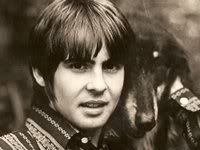
But, wait, doesn’t “Valleri” also feature Davy as frontman? Yep, and he also takes lead on three more songs on the album. In fact, the first side of the album features him on every other song. “Dream World,” which kicks off the proceedings, is pleasant enough, but it’s definitely not what you’d call a “grabber.” Still, it’s miles better than his next offering. “We Were Made For Each Other,” written by Carole Bayer (not yet Sager) and George Fischoff, which easily ranks as one of the schmaltziest songs Jones has ever committed to vinyl…and, boy, that’s saying something. The chorus is painful enough (“We were made for each other / As the stars were made for the sky / We were made for each other / No other love have I”), but when you meld it to a gloppy string arrangement, it’s much, much worse. Over on Side 2, “The Poster” – the lyrics of which instantly bring to mind “Being for the Benefit of Mr. Kite” – is thankfully at least on par with “Dream World,” which stands to reason, given that they were both co-written by Jones with one Steve Pitts. Let’s be realistic, though: Jones was far better at performing other people’s songs than he was at writing his own.
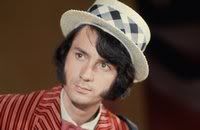
Of the four Monkees, the real songwriting star of the record – as per usual – is Michael Nesmith. His creative gifts had been flourishing from the beginning, and whenever he was given the chance to shine, he was invariably up to the task, as he showed with numbers like “Papa Gene’s Blues,” “Mary, Mary,” “You Told Me,” “You Just May Be The One,” and “Sunny Girlfriend.” On The Birds, the Bees & the Monkees, however, he was definitely firing on all thrusters. Nesmith let Dolenz handle the vocals on “Auntie’s Municipal Court,” but he held onto the mike…no pun intended…for “Tapioca Tundra,” a musical amalgam which lopes along for its first few seconds before slipping into pulsating jangle-pop perfection. “Writing Wrongs” is the least of his contributions, but its epic nature grows on you after several spins, and while it’s tempting to write off “Magnolia Simms” as a 1920s-inspired novelty, it’s far too easy to sing (and swing) along for anyone to dismiss it so easily.
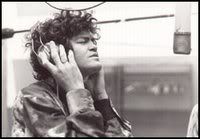
Unfortunately, a quick glance over the credits for the album reveals that Jones and Nesmith were the only two members of the group to have managed songwriting contributions. As noted, Micky takes the vocal reins for “Auntie’s Municipal Court,” but he also gets to shine on the pop-tastic “I’ll Be Back Up On My Feet,” the classified-ad-inspired “P.O. Box 9847” (the album’s only other Boyce & Hart composition), and the anti-war “Zor and Zam,” which, while decidedly heavy-handed, officially turns into a pretty cool song at the 1:08 mark. (Seriously, that powerful horn attack cuts right into you.) Poor Peter Tork, however, gets nothing. Nada. Zilch. It’s no wonder this proved to be his last proper album as a member of the Monkees during their original heyday, especially when you scour the bonus tracks and realize that he’d written and recorded several songs for consideration, the majority of which were more than serviceable.
Let’s talk about those bonus tracks, then, shall we?

We might as well give the lion’s share of the discussion to the underrepresented Mr. Tork. “Long Title: Do I Have to Do This All Over Again?” eventually made it onto Head (as well it should have), and “Tear The Top Right Off My Head” sounds like he’d been taking the same country-music cues as Nesmith, which may well be why it didn’t make it onto the album, but based on the description of the “Lady’s Baby” sessions, it sounds like Tork’s eccentricities in the studio probably soured any chance of the song earning a spot. (Engineer Hank Cicalo refers to it as “a very weird and ridiculous situation,” describing a scene with rugs, pillows, and a fair amount of wine, with an actual baby crawling all over the place, its “smiles and coos” being recorded for inclusion on the track.) “Alvin,” meanwhile, is enough of a cousin to “”Peter Percival Patterson’s Pet Pig Porky,” from Pisces, Aquarius, Capricorn & Jones Ltd., that it would’ve felt like repetition to include it on this record, too, and “Merry Go Round,” which Tork co-wrote with Diane Hilderbrand, never really takes off…but, then, it’s not even two minutes long, so that might have something to do with it.
There’s plenty of enjoyable material by the other three Monkees scattered throughout these three discs, though the repetition of tracks through various takes is likely to bore those who have no interest in hearing their musical evolution. Unsurprisingly, based on the evidence found on the album proper, Nesmith’s songs tend to be the strongest, with “Carlisle Wheeling,” “Nine Times Blue,” and an acoustic version of “Little Red Rider” among the strongest. (The latter would get a full-fledged studio performance on Nesmith’s Magnetic South album a few years later.) There’s a fantastic acoustic version of “Tapioca Tundra” that’s been unearthed for this set, and it’s particularly interesting to hear Nesmith’s vocal on an early take of “My Share of the Sidewalk,” an outtake which emerged several years ago on one of the band’s Missing Links collections. Mind you, it also explains why Jones sang on that version, as Nesmith’s performance reveals that the composition isn’t entirely within his range as a singer, but fair enough.
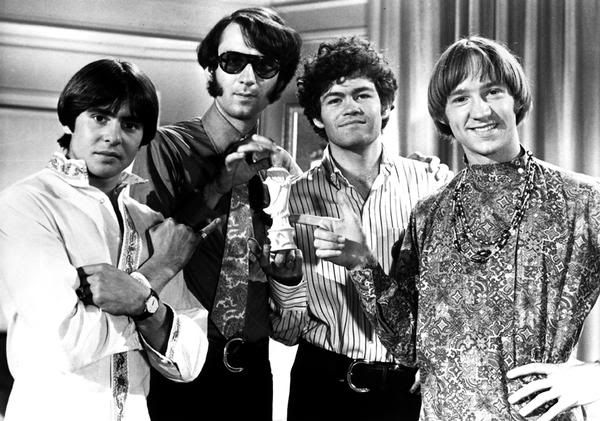
Really, we could go on for several more paragraphs praising the stuff that Rhino has unearthed for the fans, including a version of non-album single “D.W. Washburn” with an added bass vocal, Davy’s performance of Jan Berry’s “Laurel and Hardy,” Micky’s rockin’ take on “Don’t Say Nothin’ Bad (About My Baby),” and Peter’s whistle-happy performances of “Seeger’s Theme,” but it’s so much easier just to say that there’s hours of listening enjoyment to be had for those who are interested in delving deep into the band’s archives. If there’s anything we’d expect to hear complaints about, it’s the fact that the bonus material that’s been added to the first two discs of the set isn’t listed on the back of the CD sleeves, which means you’ll have to flip into the booklet to find out what you’re hearing. Even that, however, is easily defended by saying that it was done to maintain the integrity of the original cover art…and, okay, fair enough, we’ll buy that.
There’s no question about it: The Birds, the Bees & the Monkees is another clear-cut win for Rhino Handmade and can easily stand alongside their previous Monkees sets, The Headquarters Sessions and Summer 1967: The Complete US Concert Recordings. If you’re a fan who’s teeting on the face about picking it up, here’s hoping this review will serve to sway you into a purchase. After all, if this one doesn’t sell, there’s little chance you’ll see expanded reissues of the remainder of their catalog…and, c’mon, you know your life won’t be complete ’til you get that multi-disc version of Pool It!

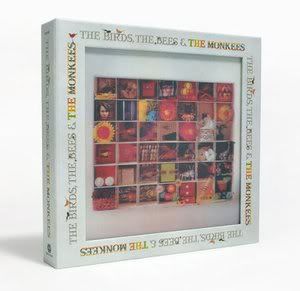



Comments